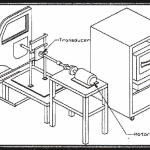
The Roles & Responsibilities of the Storeroom Manager
The storeroom manager has the responsibility of ensuring the right parts, in the right quantity, at the right time are available. But what if they are pre-occupied with other tasks to properly manage the storeroom? It increases costs, delays work and increases Mean Time to Repair. This series continues with the storeroom manager. With the storeroom manager clear on their roles and responsibilities, the storeroom can operate efficiently and accurately. [Read more…]












